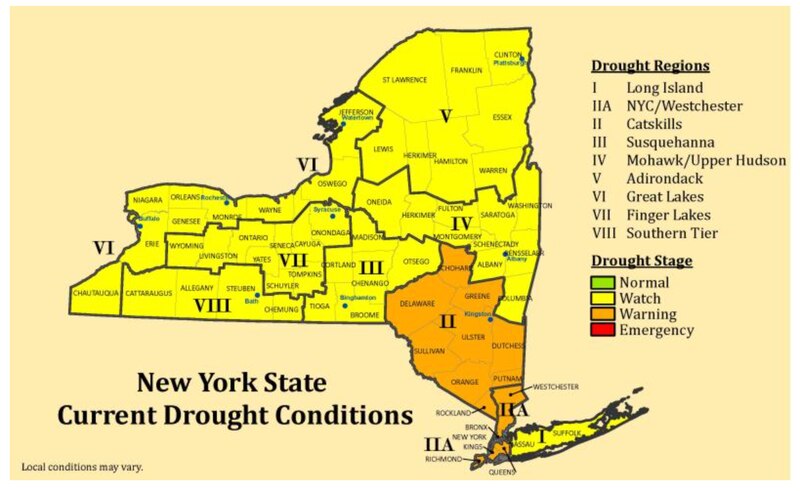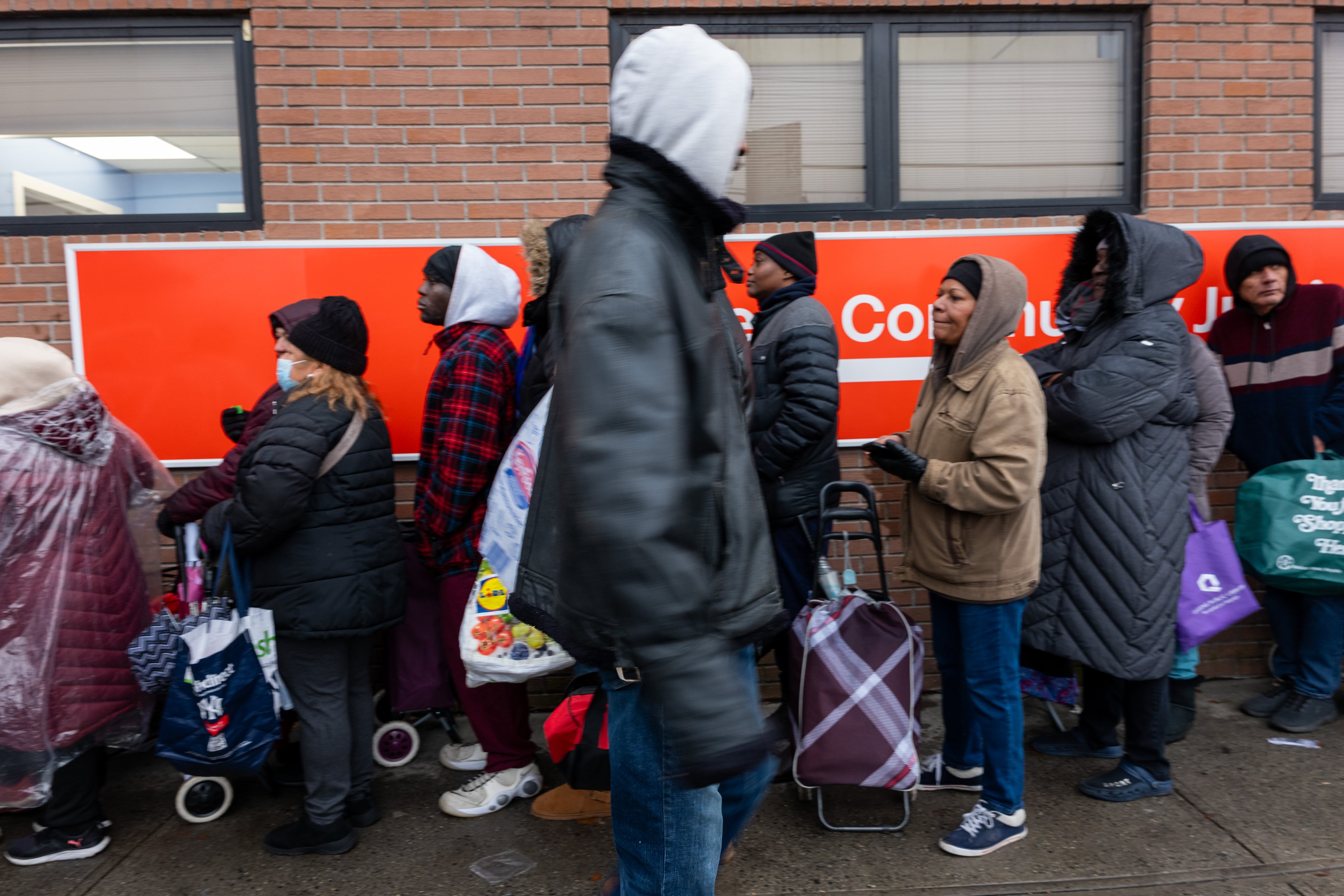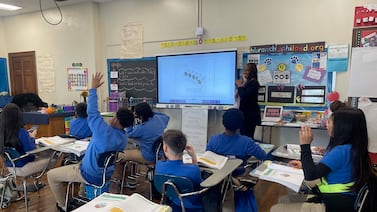This story was originally published by Healthbeat.
Sign up for Your Local Epidemiologist New York and get Dr. Marisa Donnelly’s community public health forecast in your inbox a day early.
I hope everyone had a great Thanksgiving! Here’s what you need to know about New York public health this week.
Whooping cough is spreading in New York and nationally
Whooping cough (pertussis) cases have surged in New York and nationally, returning to pre-pandemic levels. New York has reported 2,337 cases this year, compared to 687 last year. Nationally, there has been almost a fivefold increase in infections this year compared to last.

This bacterial infection causes runny/stuffy nose, sneezing, fever, and intense and sometimes uncontrollable coughing fits. Newborns are especially at high risk — the name “whooping” cough comes from the sound babies make between coughing fits. Among infants under 2 months who contract whooping cough, about half require hospitalization, and 1 out of 100 die. This is why vaccination of pregnant women and close contacts is critical to protecting newborns before they can receive their own vaccines.
One reason whooping cough may resurge is that vaccine protection wanes over time. New vaccines are being developed to provide more durable protection, but they aren’t yet on the market. Currently, there are two types of combination vaccines (meaning they protect against multiple things) available:
- DTap
- Tdap
These vaccines protect against whooping cough, tetanus (the “T” in the name), and diphtheria (the “D/d” in the name). Children younger than 7 years receive DTaP, while older children and adults receive Tdap.

The CDC recommends that everyone be vaccinated against whooping cough.
- For people who are pregnant, getting a shot of Tdap during the 27th-36th week of pregnancy is crucial to boost the baby’s immunity, helping protect them from whooping cough when they are most vulnerable to it. Tdap vaccination during pregnancy protects 9 in 10 babies from being hospitalized with whooping cough.
- Babies, young children, preteens, and teens can follow vaccination schedules for their initial DTap and Tdap shots and boosters.
- It’s a good idea for adults who have never received Tdap to get it — it can be given anytime.
When we see whooping cough increase, our response as a community is mainly aimed at protecting babies through vaccination and ensuring those around babies are vaccinated.
Hunger and food insecurity are on the rise in New York
Last week, while most gathered to share Thanksgiving meals, many faced a very different reality. Food insecurity, meaning someone doesn’t have enough to eat at least some of the time, affects 1.9 million New Yorkers. This is up 76% since 2021, with 1 in 6 households with children lacking enough to eat, and is higher than the 55% increase seen nationwide.

During 2021-23, 1.2 million people in New York City (14% of the population) lived in food-insecure households. New York City’s rates are highest in the Bronx, where 1 in 5 residents and 1 in 3 children experience food insecurity.
To combat food insecurity, food assistance programs provide free or reduced-cost food. There are three main ways to access food assistance in New York:
- SNAP (Supplemental Nutrition Assistance Program): A federal program that issues EBT cards for purchasing food.
- About 35% of New Yorkers qualify for SNAP, but only 75% of eligible New York City residents are enrolled. There’s a lot of room for improvement.
- See the New York SNAP website for eligibility criteria.
- Free or reduced-price meals for children in school.
- New York City public schools offer free meals to all students during the school year. Learn more here.
- Many schools outside New York City also offer free or reduced-price meals — eligibility details are available here.
- Food banks, pantries, and soup kitchens. These organizations offer free or low-cost food across New York.
- Use the Food Help NYC tool or call 311 to find nearby locations, or view a list of food assistance providers across the state here.
If you’re not food-insecure and want to help:
- Donate food: Drop off items at supermarket collection points, send them via online shops, or donate money to food banks.
- Volunteer: Help sort, pack, cook, serve meals, or assist with home deliveries.
To find ways to get involved, reach out to your local food bank or soup kitchen.
New York is still in a drought while fires die down
While recent rain in New York helped wildfire suppression and improved air quality, much of the state is still under drought warning. New York City’s reservoir is still below 20% of historical standards.

During the drought, New Yorkers are urged to conserve water:
- Shorten showers: Save 5–7 gallons a minute.
- Turn off faucets: While shaving, brushing teeth, or doing dishes (faucets use 2–3 gallons a minute).
- Fix leaks: A slow drip wastes 15–20 gallons daily.
- Report fire hydrant leaks: Call 311.
More tips are available here.
Dry conditions have increased wildfire risks in New York. The Jennings fire, which burned 5,304 acres along the New York-New Jersey border in November, is fully contained. Thank you to all the firefighting professionals and volunteers who responded.
Freezing temperatures in New York City trigger Code Blue warnings
A Code Blue Weather Emergency notice is issued when the temperature drops below freezing (32 degrees Fahrenheit or less) between 4 p.m. and 8 a.m. No one will be denied shelter in New York City during a Code Blue. Should you see a vulnerable person out in the cold, call 311, and an outreach team will be dispatched to offer assistance. We expect more frequent Code Blue warnings to be issued now that temperatures have dropped this season.
Bottom line
You’re all caught up on this week’s New York public health news. See you next week!
Love,
Your Local Epidemiologist
Dr. Marisa Donnelly, a senior epidemiologist with wastewater monitoring company Biobot Analytics, has worked in applied public health for over a decade, specializing in infectious diseases and emerging public health threats. She holds a PhD in epidemiology and has led multiple outbreak investigations, including at the California Department of Public Health and as an Epidemic Intelligence Service Officer at the Centers for Disease Control and Prevention. Marisa has conducted research in Peru, focusing on dengue and Zika viruses and the mosquitoes that spread them. She is Healthbeat’s contributing epidemiologist for New York in partnership with Your Local Epidemiologist, a Healthbeat supporter. She lives in New York City. Marisa can be reached at mdonnelly@healthbeat.org.





